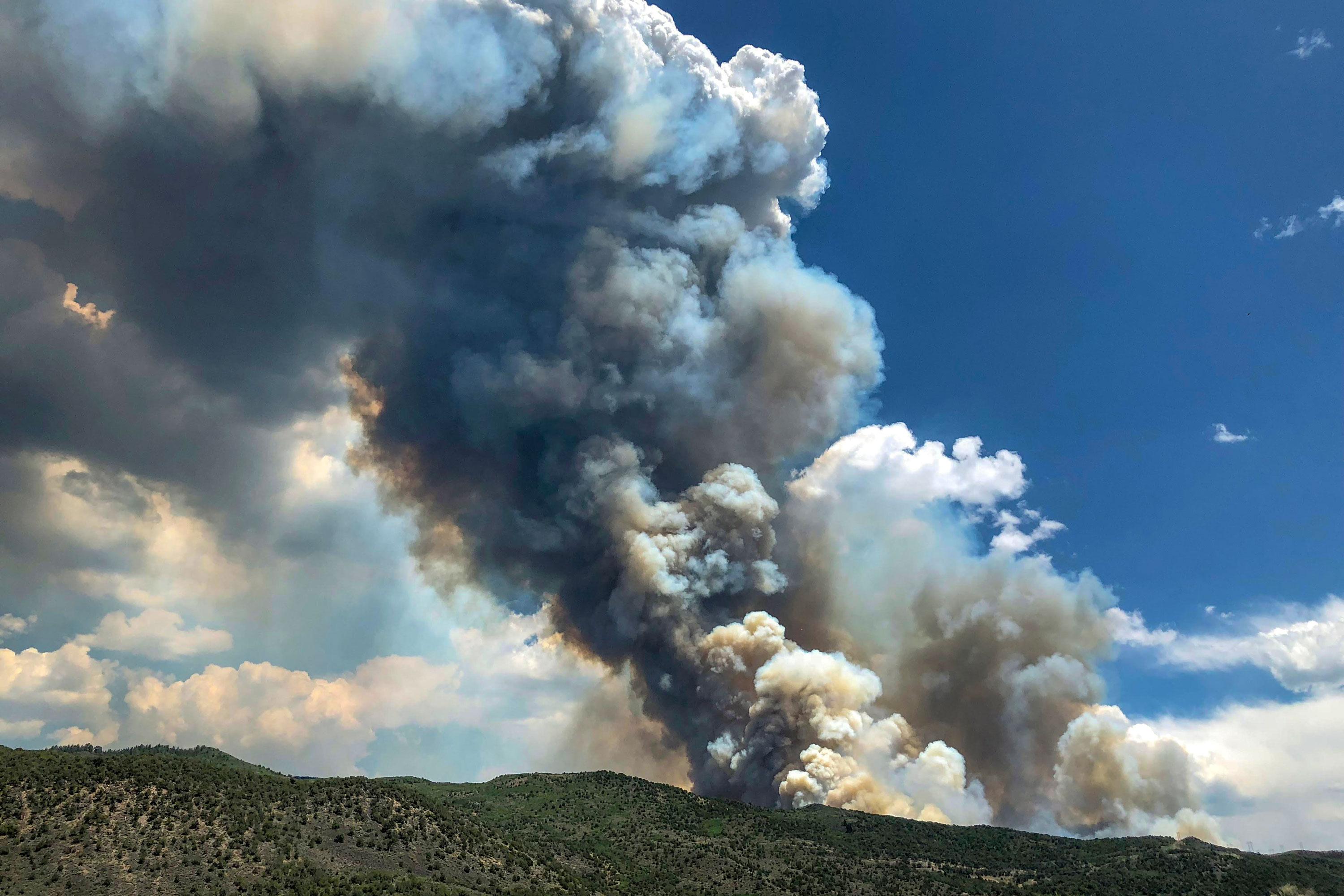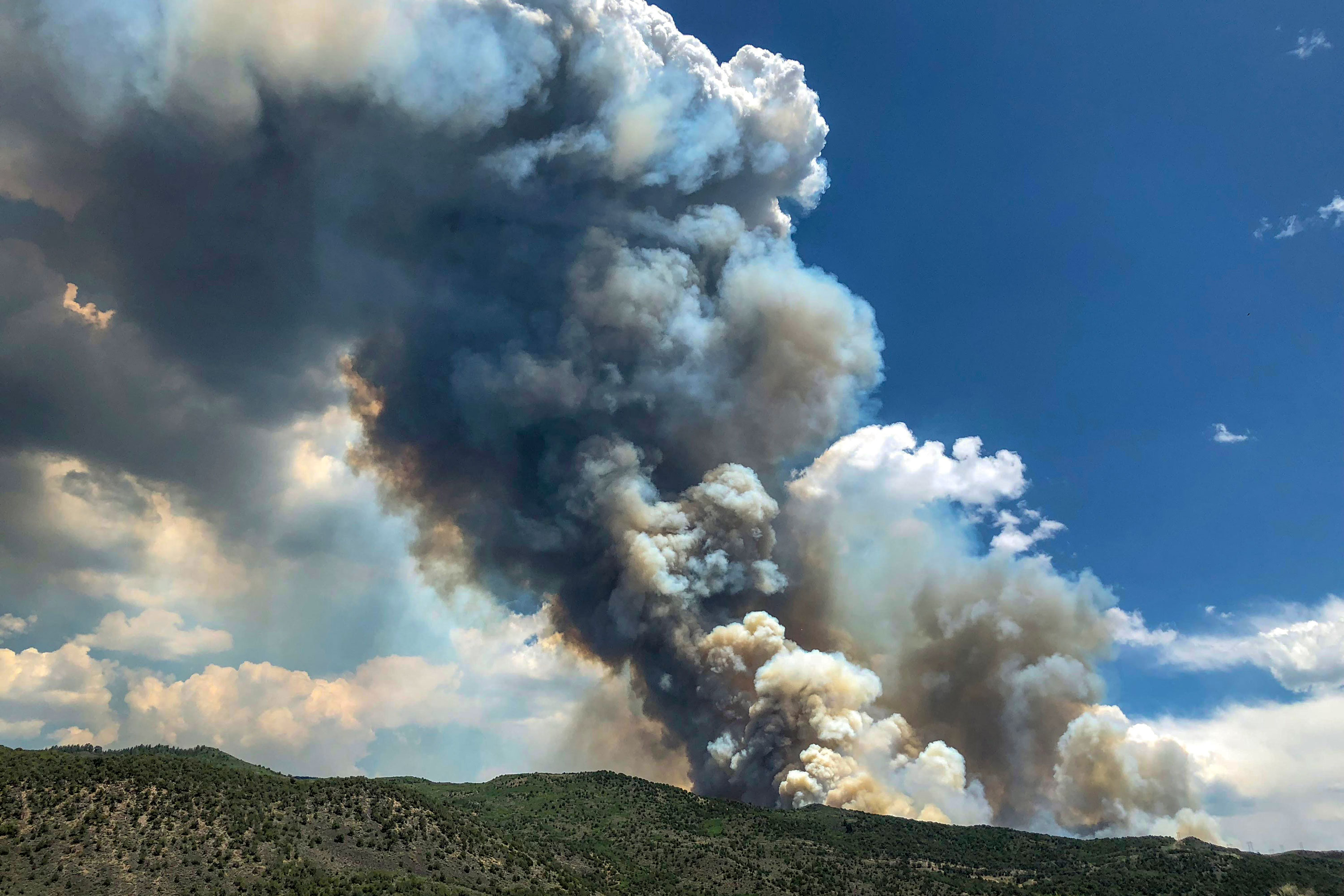

Last summer, Eagle County, at the rooftop of Colorado’s high country, faced its first major wild land fire. The Lake Christine Fire started a few blocks from the town of Basalt and burned more than 12,000 acres. Jill Ryan, at the time an Eagle County Commissioner, said most folks evacuated or were told to stay inside, because of “really poor air quality, the smoke that just settled in that valley.”
That’s a big health hazard, which can lead to serious respiratory diseases and harm to the lungs. Ryan said the fire stretched local governments thin -- and they know they need to be ready for next time.
Winters in Eagle County are getting warmer and shorter. Combine that with hot, dry summers and things are likely to get more dangerous. “When you have a lack of precipitation and heat, even in the 90s, for a sustained period, it’s the perfect recipe for wild land fire,” she said.
Last year was one of Colorado's warmest and driest years. That has many thinking about the health of the planet — and the impact on human health from things like hotter weather, dirtier air and severe wildfires. A new report from the nonpartisan, nonprofit Colorado Health Institute finds most Colorado communities don’t have a plan to protect its residents or prepare for those changes.
Eagle County is better off than most: It does have a climate action plan that aims to reduce greenhouse gas emissions and to prepare for warming. The report finds just 26 of Colorado’s 64 counties have something similar. Those that don’t track with pockets of climate skepticism.
“Where we saw populations not believing that global warming is occurring or that it’ll harm them personally, we saw their governments not having climate action plans or climate readiness resiliency plans,” said Chrissy Esposito, one of the report’s authors.
One community in northeast Colorado — Larimer County — does have local climate initiatives, although it lacks an in-depth county climate action plan. John Kefalas, a county commissioner in Larimer County and former state lawmaker, said the index may help local leaders take action. The emphasis on the human health impacts of warming may help them avoid partisan fights.
“Focusing on community health, focusing on clean air, clean water, clean land: those are issues we can find more agreement, regardless of political party and label,” Kefalas said.
He said the study could help map out how to help vulnerable groups, like children or the elderly, deal with an extreme weather event.
“We need to be very mindful in terms of how these issues will impact older adults,” Kefalas said. He noted those groups “are most susceptible to air pollution, high temperatures and those sort of extreme weather patterns, which we are already beginning to see.”
The report offers a roadmap to draw up plans. It measures a region’s exposure, from its risk of wildfires to extreme heat and drought. It also gauges demographics and what populations may be vulnerable, as well as how ready counties are.
“Are you living in a floodplain? Or are you living in a wildland urban interface?” Esposito said. “There are tools to help you assess that.” She also said it looked at whether public health plans consider possible impacts from a warming climate.

Southeast and northwest Colorado are most vulnerable, the report found. That’s due to a high number of heat days, and people seeking medical help for heat-related illnesses.
Co-author Karam Ahmad hopes the report helps encourage local leaders to think about the impact warming is having on their community, their part of the state. “Climate change can seem very daunting,” Ahmad said. “This is a global health issue, but what we’re trying to do with this index is to make it a local issue. A local issue that has local implications but also has local solutions.”
The report tries to help with that by looking county by county at the effect climate change will have.
“So depending on if you live on the Western Slope or you live on the I-25 corridor, or if are a person who suffers from asthma or some sort of chronic condition, climate change is going to look different for you,” Ahmad said.
Ryan, the former Eagle County commissioner who was recently appointed to run the Colorado Department of Public Health and Environment, said leaders in communities across the West need to prepare for the way climate change amplifies disasters.
“When you have climate change, the effects of regular weather are just amplified,” Ryan said. “So your wildfires are hotter and they burn longer, floods are bigger and more destructive.”
In recent years, the kind of extreme weather Ryan is worried about has been on full display, from Colorado’s floods in 2013 to California’s Camp Fire in 2018.That fire killed nearly 90 people and destroyed 14,000 homes. Recent reporting shows officials in Paradise did make preparations for wildfires, but not for a catastrophic “wind-driven ember storm” like last year’s burn.
Some in Colorado watched that disaster from afar with nervous interest. Ryan hopes local leaders learn the danger of not being ready for such large-scale disasters.
“The planning is crucial,” Ryan said. “You’ll have a much better response and mitigation and recovery.”









